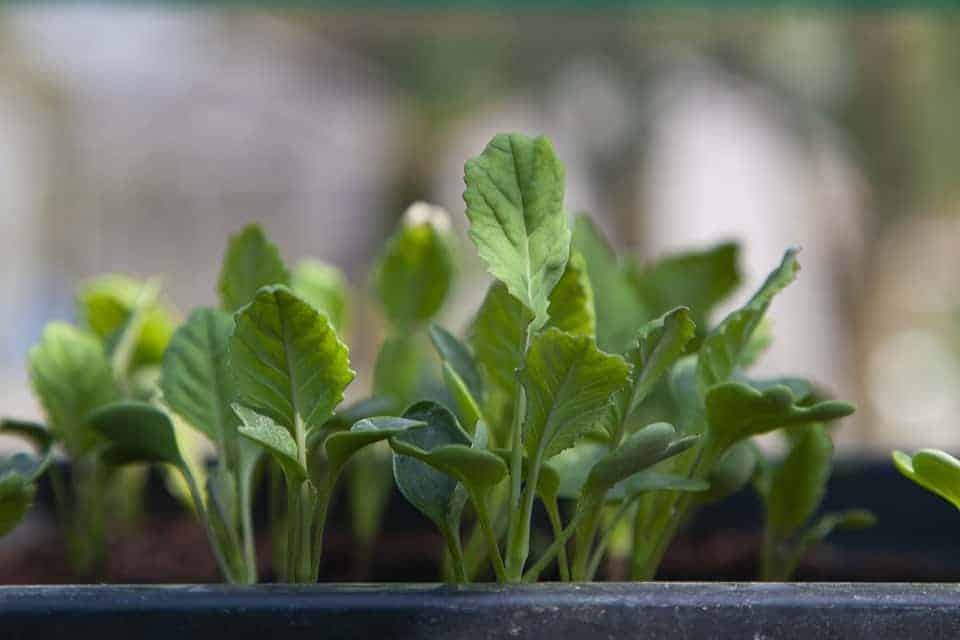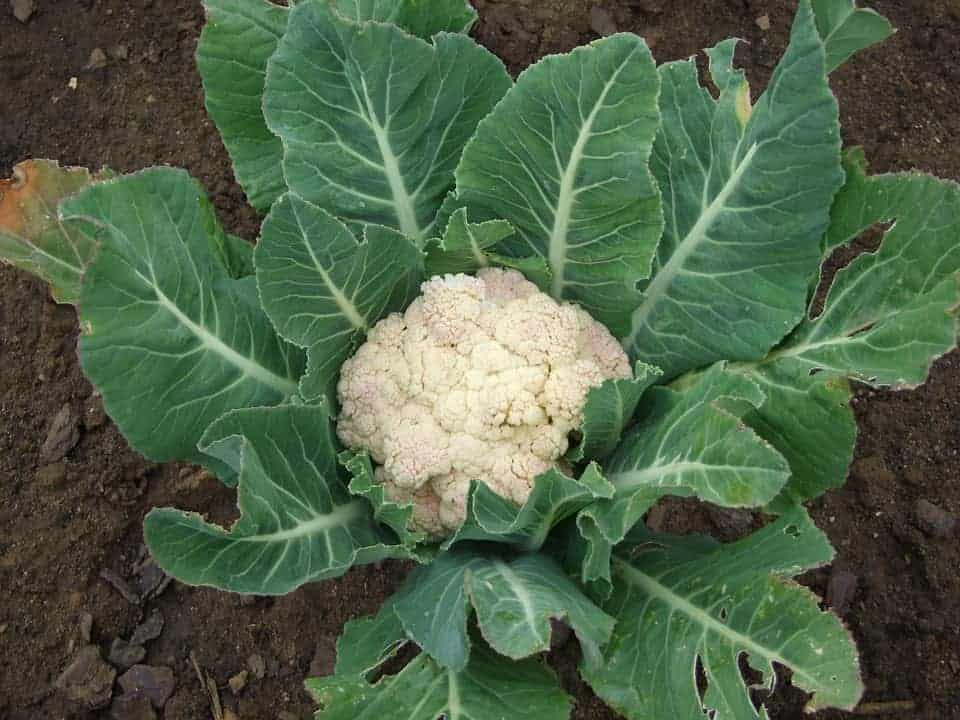Being in the same family, technically the same species, as kale, broccoli, cabbage, and brussels sprouts (called brassicas), cauliflower seeds look identical and should be planted in the same way. Cauliflower seeds germinate best when sown indoors, planted 1/2 inch (1.25 cm) deep, and preferably at least 2 to 3 seeds per planting hole and thinning out to one sprout after.
On this page:
When to Sow and Transplant Cauliflower Seeds
You can sow cauliflower directly outdoors (under row covers or plastic), but for best success, you should start your cauliflower seeds indoors and transplant later.
Sow cauliflower seeds indoors 4 to 7 weeks before your average last frost date. Much like other brassicas, cauliflower seeds will take around 1 to 2 weeks to germinate, usually within 10 days if sown at room temperature.
Around 2 to 4 weeks before your average last frost date, you can transplant your cauliflower seedlings outdoors. Although cauliflower is cold hardy, tender seedlings are more vulnerable to frost and can benefit from some protection like garden fleece, row covers, or some clear plastic over them.
Sowing Cauliflower Seeds for a Fall Harvest
If you are planning to have your cauliflower mature into the fall, sow around 12 to 14 weeks before your average first fall frost date.

How to Sow and Transplant Cauliflower Seeds
When starting indoors, sow 2 to 3 cauliflower seeds up to 1/2 an inch deep in small nursery pots or seed starting trays/flats. Keep potting soil evenly moist but not soggy, which could cause seeds or seedlings to rot. If multiple seeds germinate, thin to 1 cauliflower seed per pot/cell.
If directly sowing outdoors, again sow 1/2 an inch deep, 2 to 3 cauliflower seeds (more if your seeds are old) at least 18 inches apart or more.
To transplant cauliflower seedlings, space them 18 inches or more apart in well-draining, rich soil.
Related Questions About Starting Cauliflower from Seed
Why Aren’t My Cauliflower Seeds Germinating?
Cauliflower seeds have an average “shelf life” of around 4 years, after which the rate of germination drops significantly. Normal germination rate for fresh cauliflower seeds is around 80% or higher. If you have old cauliflower seeds, you may need to plant more of them to get the same number of plants.
Your seeds will take longer to sprout in cold conditions, so you may need to wait longer. The ideal temperature for cauliflower germination is around 70°F (21°C), or room temperature. Temperatures below 50°F (10°C) can significantly slow down germination. If you’ve directly sown outdoors, you can speed up germination by placing clear plastic or garden fleece over the soil until you see sprouts or the weather warms up.
If the soil (outdoors) or potting mix (indoors) you’ve planted your seeds in is too wet, cauliflower seeds can easily rot before they germinate. Keep soil moist but not soggy.
Why Do My Cauliflower Sprouts Keep Dying?
 This is also often a soggy soil issue. If soil or potting mix is too wet, that will encourage mold which can aggressively attack small, tender sprouts. Different types of mold will infect and kill seedlings at the base and down to the roots, causing them to flop over and die; this is a disease called damping off. This is a common problem for all seedlings, not just cauliflower.
This is also often a soggy soil issue. If soil or potting mix is too wet, that will encourage mold which can aggressively attack small, tender sprouts. Different types of mold will infect and kill seedlings at the base and down to the roots, causing them to flop over and die; this is a disease called damping off. This is a common problem for all seedlings, not just cauliflower.
Some people will sprinkle cinnamon over the soil to inhibit mold but the easiest way to avoid this is by keeping your seedlings in a moist but not sopping wet soil or potting mix.
Fortunately, once seedlings get a few true leaves, they are strong enough to not succumb to damping off.
How Can I Stop Pests from Eating My Cauliflower Seedlings?
I have had this happen a lot with my seedlings every spring. I go outside to check on them and a few (sometimes all!) are either completely gone or all that’s left is the little stem popping out of the soil.
There many pests that eat cauliflower seedlings, so it’s hard to identify what is actually eating them. If they’re growing in a very damp environment with lots of nooks and crannies for slugs, they are most likely the culprit.In my case, it’s usually slugs or sometimes rabbits.
Slugs are harder to prevent, but you can use organic slug pellets or slug-attacking nematodes if you have an infestation of them. Unfortunately, egg shells and copper rings have been proven not to work. But you can try using beer traps to drown slugs.
Rabbits are easier to control. Fencing off your garden bed with a 3- or 4-foot tall barrier can do the job, or you can put some smaller barrier like sticks or stakes around your cauliflower sprouts until they get large enough to not be tasty enough for rabbits.
